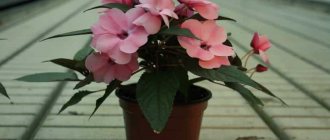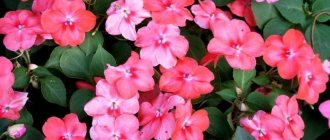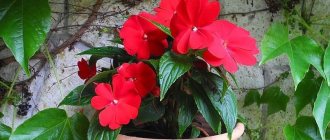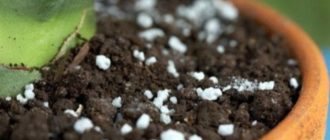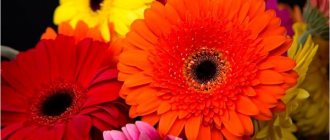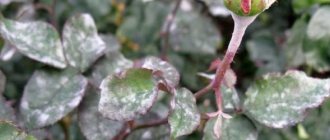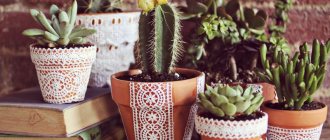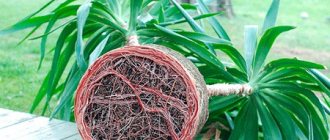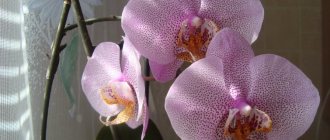Fast growing, almost continuously blooming and always elegant, balsams are considered one of the best indoor plants for beginning gardeners.
Bright impatiens-lights, which delighted our grandmothers, are still desirable residents of window sills, loggias and garden plots. They respond to simple care with the formation of new buds and shiny foliage. But this unpretentious plant sometimes becomes a victim of insect pests and pathogens of various diseases. What dangers threaten the balsam flower? How to identify them and, if necessary, provide treatment for ornamental plants?
Most often, the reasons for the weakening of a green pet, its withering or cessation of growth are failure to comply with the required conditions of maintenance or lack of attention. In nature, balsams live in regions with a warm, fairly humid climate, where there are no sudden changes in temperature and, especially, frost.
The minimum permissible temperature for a balsam flower is 13 °C, but if indoor or garden balsam is decorated with variegated foliage, then the air should not be cooled below 15 °C. The optimal temperature for flowering is 18–20 °C. In a hotter room, flowers fall off faster and the formation of new buds slows down. In addition, other serious problems are inevitable.
It’s not for nothing that balsam has been called Vanka the Wet since ancient times. Plants are not only extremely critical of soil drying out, but also love moist air.
Asking the question: “Why do balsam leaves fall?”, the gardener must analyze the conditions in which the flower is located. Operating heating devices affect both the room temperature and air humidity. The lower it is, the stronger the evaporation of moisture from the leaves, and the balsam weakens faster. This is also caused by frequent drying out of the soil, especially during active growth.
As a result, flowering and the growth of new shoots are inhibited, and the leaves, starting from the lower ones, turn yellow and fall off. Insects and mites often take advantage of this situation.
An excessive decrease in air temperature is also an unfavorable factor. Impatiens cannot tolerate even short-term cooling, so it is better to remove plants taken out into the garden or onto the balcony at night from the second half of summer at night.
Balsam diseases and their treatment
At low temperatures, the need for moisture decreases, so watering must be reduced. If this is not done, the appearance of rot and other diseases and pests of balsam, as in the photo, cannot be avoided.
Among balsam diseases, downy mildew causes the greatest harm to plants located outdoors.
Several years ago, a real epidemic of this disease struck balsams in the United States. The development of infection was facilitated by:
- cool wet weather;
- crowded plantings, in which moisture does not have time to evaporate from the soil surface;
- insufficient attention to plant care.
The first signs of a disease caused by harmful fungi appear at temperatures below 16–18 °C with 100% humidity. The pathogens penetrate the leaf tissue with moisture, and after a couple of days the healthy balsam flower is transformed. First, a whitish coating appears on the back of the leaves, then they turn black and fall off.
New foliage becomes smaller or growth stops altogether. As a result, only non-viable shoot remnants remain from the flowering balsam. To prevent plant death during cold weather:
- reduce the frequency of watering;
- protect balsams from cold dew;
- take measures to ventilate the room.
At the first signs of the disease, all balsams affected by the disease are removed, and plants are treated with systemic fungicides without visible damage.
Impatiens that are forced to grow in excessively wet soil often become victims of putrefactive bacteria.
An additional factor contributing to the spread of dangerous fungi and microorganisms is low air temperature. In such conditions, plants need less moisture, their metabolic processes and growth slow down.
Rot affects stems in contact with the ground, as well as leaves and other parts of the plant. An infected shoot or leaf stalk turns brown, becomes thinner and dies. The greatest attention to balsam disease and its treatment should be given if traces of gili are found on young specimens and seedlings that have just taken root.
As a preventive measure, cuttings prepared for rooting must be treated with a systemic fungicide, then repeated treatment is carried out at planting, not forgetting to irrigate the soil at the base of the stem well with the product.
Reproduction
Since it is recommended to renew this plant every 3 years, the question arises: how to do this? Reproduction of Vanka wet is carried out in 2 ways:
- Seeds. For this option, you need to sow the seeds in moist soil. Cover the top with film to create a greenhouse effect, as well as maintain the high humidity that this plant needs. If balsam grows in the garden, then it can propagate perfectly by self-sowing.
- By cuttings. To do this, beautiful and healthy shoots must be cut and placed in water. It must be immersed deep in water, otherwise it is likely to dry out. Then, after the roots appear, you can plant them in the ground.
Insect pests, spider mites and balsam diseases
The balsam flower is not only moisture-loving, but also demanding of lighting. With a lack of sunlight:
- the shoots begin to stretch out and become thinner;
- foliage growth slows down;
- buds are poorly laid and opened.
Direct sunlight will also not bring beauty and health to ornamental crops. The balsam flower quickly loses moisture, the natural course of metabolic processes is disrupted, and the plant inevitably weakens.
Similar symptoms can be noticed when there is a lack of nutrients, when the plant has not been replanted or fertilized for a long time. As well as a long stay in dry air, this can attract diseases and pests to the emaciated balsam, as in the photo.
An attack by thrips on impatiens can be recognized by the characteristic deformation of young foliage at the tops of shoots and a change in the appearance of the growing point. As the infection progresses, the appearance of balsam flowers also changes. The edges of the petals become dry, brown, and in the center of the corolla the culprits of the plant disease are easily visible.
Thrips are doubly dangerous, since they not only weaken the flower, disfigure it and prevent it from growing, these pests carry the mosaic virus, another disease of balsam.
Young specimens are more susceptible to thrips infection than adults. The sooner signs of pests are noticed and treatment of plants with insecticides is started, the higher the likelihood of cure and preservation of the decorative value of the crop.
Affected plants are isolated, and damaged parts of the bush are destroyed. Spraying is repeated several times, every 4–5 days, until insects at all stages of development are covered by the treatment.
Aphids that colonize balsams outdoors, as well as thrips, contribute to the spread of various viruses on plants that cause mosaic disease. It can appear in the form of spots of different colors and shapes, gradually leading to the drying and falling of flowers and leaves.
It is almost impossible to cure affected specimens, so they are destroyed and increased attention is paid to preventive measures, that is, the fight against insect vectors.
In addition to aphids and thrips, balsam is threatened by soil nematodes, whiteflies and all kinds of mites.
To get rid of sucking insects, use systemic insecticides or proven home remedies, such as herbal infusions. But mites, as the most frequent “guests” on balsams, require a separate approach.
Types and varieties
The genus Impatiens includes more than 400 species of these plants, which have thick, but almost translucent, succulent and smooth stems. When you touch the surface, you feel a coolness emanating from them and it seems that the stems are wet. And if by chance the fragile stem breaks off, sweet-tasting juice flows out of the wound abundantly. Varieties of the Vanka wet flower can be seen in the photo in the gallery:
- Waller's balsam (Wallera), or B. balsam, or B. garden; This is a fairly widespread erect plant, reaching a height of 70 cm. It has a fairly thick stem on which simple or double flowers are located.
- Balsam “New Guinea hybrids”; This perennial form was obtained from Hawker's balsam and became known as an ornamental plant in 1972. It is characterized by: almost year-round flowering, flowers of different colors and large sizes (up to 5 cm), intense color of leaves, the central vein of which may have a color difference from the surface of the leaf.
- Balfour's Balsam; It is native to the Pyrenees, where it is grown in gardens or in pots on terraces. It is very independent in reproduction and, due to the owner’s oversight, who did not remove the excess bolls in time, next year it can easily turn even a tiled area into a rugged jungle.
- Niamey balsam; African roots left their mark on the impressive appearance of this handsome man. The succulent stems can rise to a height of up to 1 m and form many side shoots, densely covered with elongated leaves. In their axils there are rather long pedicels bearing buds and flowers that somewhat resemble parrots sitting on perches. The decorative effect of the flower is given by the enlarged sepals in the form of a narrow curved jug or horn. Its color can be pink, red or red-yellow. The most popular are plants with two-color paint.
- Ferruginous balsam; This fairly large garden plant, reaching a height of 2 m, received its name due to the presence of 2 glands at the base of each leaf. The flowers are usually white, pink or more often dark red, collected in inflorescences.
- Creeping balsam; In the CIS countries this is still a very rare decorative species. Perhaps it is the only one of all the impatiens that has a real creeping stem and small rounded leaves resembling hearts, attached to the shoot with rigid legs. Against the background of dark green foliage, large flowers stand out with bright, juicy, yellow spots.
- Golden balsam; A perennial plant whose stem height usually does not exceed 1 m. The flowers are very beautiful, bright yellow, with red stripes on the inside of the corolla and are collected in inflorescences at the ends of the branches.
Among the genus (Impatiens) there are both annual and perennial. Annual types of balsam are most often grown in gardens. This is a garden balsam (I. balsamina) originating from East India and iron balsam (I. glandulifera) native to the Himalayas. Among the garden balsam, several groups are distinguished by the type of flowers: carnation-flowered, camellia-shaped and rose-shaped.
Perennial balsams - indoor (I. sultanii) and Holsta (I. holstii) in our climate are grown exclusively in rooms and greenhouses.
Currently, not specific balsams, but hybrid varieties are usually grown in rooms. Hybrids differ from species balsams in a wide variety of colors and flower shapes. Among the hybrids you can find both plants with variegated “striped” flowers, and forms with multi-petaled, double flowers.
The so-called “New Guinea hybrids” are also very popular among gardeners. They were obtained from crossing several species (I. holstii. I. linearifolia. I. schlechten) and are distinguished by very large flowers and brightly colored leaves (red or bronze).
Among the species of balsams, the variegated form of indoor balsam (I. sultanii variegata) is very popular in indoor culture.
Common balsam diseases and their treatment
One of the main signs indicating that “Vanka wet” requires the help of a grower is a change in the appearance of the plant. Strange spots, leaf drop, discoloration, or wilting are the most common signs of a problem. In most cases, the cause of the development of diseases or damage to balsam by pests is incorrect care.
If the conditions of maintenance are violated, the immunity of plants, which ensures their resistance to parasites and pathogens, begins to rapidly decline. Some diseases are destructive to balsams. Given this fact, it is important to take all necessary measures in time, as soon as you notice that the flower has acquired a sickly appearance.
Bacteriosis
The fact that the plant has become a victim of a dangerous disease - bacteriosis, is indicated by the formation of gray-brown spots on its leaves. As the disease progresses, the lesions become black-brown in color. Among the main causes of bacteriosis, flower growers cite excess moisture in the soil. In addition, balsam can be infected with bacteriosis pathogens through infected (poor-quality) soil or untreated tools. This disease is very dangerous, since most often the plant affected by it dies quite quickly.
In most cases, diseased flowers must be destroyed. However, you can try to compete for your green pet in the following way:
- remove all affected parts of the plant;
- thoroughly spray the bush and soil in the pot with a solution of copper oxychloride (4 grams of substance per 10 liters of water);
- repeat treatment after 2 weeks.
Important! During treatment, the plant must be isolated from healthy flowers. Considering that this disease is extremely contagious, the risk of its spread throughout the entire green collection is very high.
Powdery mildew
The fact that the plant has suffered from powdery mildew is indicated by specific whitish spots that form on the leaves. If you do not start treating the disease in a timely manner, very soon the affected leaves will wither and fall off. The main causes of this disease are disturbances in temperature and humidity conditions, incorrect watering and lack of lighting. The complex for treating powdery mildew includes the following measures:
- removal of affected parts;
- treating the bush with a soap-soda solution (1 tablespoon of soda ash, 2 tablespoons of soap, 5 liters of warm water); the plant is treated using a sprayer for indoor flowers;
- after 1.5–2 weeks the procedure is repeated.
Mosaic
One of the most dangerous diseases that leads to the death of balsams is mosaic. Specific symptoms of this disease are the formation of yellowish spots and deformation of the foliage. As the disease progresses, the tissue of the affected leaf blades undergoes necrosis, as a result of which the plant gradually turns yellow and eventually dries out completely. The main carriers of the causative agents of this disease are thrips - tiny parasites that live in the soil.
Since there are currently no effective treatments for this disease, diseased plants are usually destroyed.
Rot
Failure to follow plant care recommendations often causes the development of an insidious fungal disease - gray rot. With this problem, dirty brown spots begin to form on the foliage of affected balsams. Beginning flower growers often encounter the development of rot on balsams as a result of watering with cold water, as well as due to too low air temperature in the room. To save the plant, you must adhere to the following steps:
- remove all infected parts of it - leaves and stems covered with spots, in this case they are cut off with a sharp disinfected blade, after which they are destroyed;
- after the procedure, the diseased bush is carefully treated with fungicidal preparations (“Fundazol”);
- To make the treatment more effective, you can spray the plants with products prepared according to folk recipes, for example, an infusion of dry garlic or onion peels.
Pests
Impatiens are quite resistant to pest attacks, but flower growers often have to face this problem. Some parasites can be detected with the naked eye, others with a magnifying glass. The activity of others can be indicated by corresponding traces of vital activity - fragments of cobwebs, spots and dots on leaves, buds and shoots.
Spider mites
Very often, weak balsams become victims of spider mites. The fact that the plant has suffered as a result of the activity of these pests is indicated by the formation of a whitish coating on the leaves that has a fibrous structure. This plaque is a waste product of mites that feed on the juices of the flower. In most cases, these parasites enter pots with indoor plants from the external environment.
They can be brought into the house on clothes and shoes. And also the source of the spread of pests can be contaminated soil, purchased from a dubious store or prepared with your own hands from untreated ingredients. To destroy ticks, chemical agents are used - “Aktellik”, “Fitoverm”.
The process of treating plants will go much faster if the affected bushes are additionally sprayed with soapy water.
These tiny pests often plague indoor flower lovers. The fact that the green pet has suffered from the activity of aphids is indicated by yellowing and deformation of its leaves, buds and shoots.
Causes of yellowing and falling leaves of balsam
What to do if the leaves of Vanka’s wet balsam turn yellow and fall off?
Let's figure out what are the most common mistakes people make when caring for this flower. So, why can the leaves of a wet Rolyflower turn yellow:
- Direct sunlight.
- Not enough light.
- Little watering.
- Low room temperature.
- Various pests.
- Dried leaves were not cut off in time.
- The leaves were not sprayed.
- In a cold room, you cannot constantly keep the soil wet.
- The plant is not adapted to proximity to other flowers.
- There is dry air above a hot radiator.
- Tobacco smoke.
As follows from the above, when maintaining any plant, balsam is no exception; it is necessary to create certain conditions in which this particular specimen will be comfortable.
What conditions does a flower need to create:
- It is necessary to provide the wet robe with sunlight, but not place it in direct sunlight.
- The flower loves moisture, but in winter it needs to be sprayed more and watered less.
- The temperature should not be too low, below 17ºC, (in winter it can be temporarily 13ºC) and should not exceed 30ºC. The most comfortable temperature for this plant is 21-25 ºC.
- The plant prefers moist air.
- Fertilize with mineral compounds (potassium-phosphorus and nitrogen fertilizers).
- Replant a flower - on average once every 5 years, even more often if possible.
- The flower must, if necessary, be carefully trimmed to form a bush. We are talking about old yellowed leaves and faded peduncles, if you do not need seeds.
- The flower should not be placed on a windowsill in direct sunlight; diffused light or partial shade will do.
- The soil needs to be loose and nutritious.
The best soil mixture for a flower is turf soil, which contains sand and humus. In summer, the plant must be watered daily and a lot, and in winter, moderate watering is indicated. In the summer, sometimes the flower is planted in open ground.
Pests, diseases and adverse conditions
Watering balsam must be approached with all responsibility, so that there is enough moisture, but not excessive, especially in winter. You need to water moderately, but regularly spray the leaves to prevent the spread of the fungus. With excess moisture, the soil begins to rot, creating the necessary conditions for the appearance of fungus. In this case, you need to transplant it into another pot as soon as possible, with new soil and plenty of drainage. If the plant is severely damaged, it is better to take cuttings and grow a new healthy plant.
The scale insect is extremely dangerous for balsam. If you find “tubercles” of scale insects, you need to remove them mechanically. And then treat the plant with an alcohol or soap solution, perhaps using a soap-kerosene emulsion. If the lesions are significant, then the following chemicals can be used: Aktara, Actellik or Bankol.
Spider mites are also dangerous. Very often the cause of the appearance is excessively dry air or proximity to diseased plants. The mite may be seen on the leaves in the form of thin cobwebs. The parasite can be destroyed using the previously mentioned drugs plus Neoron or Agravertin.
If the leaves turn yellow and fall off, this is a sign of the appearance of whitefly - a tiny white fly. It should be noted that it is not the adults who harm the flower, but their larvae, similar to aphids. Turning over the leaves of an infected balsam, on the back of the leaf you can see many small insects secreting sweet juice, as a result, the leaves appear sticky. In pest control, the same drugs work effectively as in the case of scale insects and mites, plus Fitoverm. Among the folk remedies, a soap solution made from laundry soap, a solution from dishwashing detergent, and onion tincture have proven themselves to be effective.
Conclusion
“Vanka wet” - has the official name Waller’s balsam, or Sultan’s. A perennial plant that gets its name from its ability to produce droplets of water at the tips of its leaves. In general, wet Roly is an unpretentious plant, given its biological characteristics. The plant loves moisture and does not tolerate tobacco smoke. Thus, we can say that balsam will benefit all household members.
Interesting to know! Wet vanilla leaves are added to vegetable salads, because the plant contains a number of useful microelements. It is possible to prepare a decoction from its flowers that will have healing properties. In homeopathy, balsam is used to treat urolithiasis and gout. Balsam is included in the composition of drugs - toxoids. And the famous hair dye - henna - is made from the roots of balsam.
Why do the buds fall off?
Often, beginning flower growers are faced with situations when the “Vanka wet” flower begins to shed its buds. The main reasons for this phenomenon include violations of temperature and humidity conditions, excess nitrogen in the soil mixture and potassium deficiency. Another reason that can cause buds to fall off is a draft. Impatiens are very sensitive to drafts and cold snaps, which are stress factors for them. It is also necessary to check the condition of the soil mixture in the pot. It should not be over-moistened.
Despite the fact that this flower loves regular watering, excess moisture in the soil can cause its roots to die and the buds to fall off.
Flower propagation
It is advisable to renew the flower every three years. Vanka wet reproduces in two ways:
- Seeds. In spring, seed material is treated with a weak solution of potassium permanganate and sown in moist soil, three seeds per pot. The top is covered with plastic film to create a greenhouse effect and maintain high humidity. Shoots appear after a week, during which time the cover is removed. After a month, real leaves form on the sprouts and the seedlings can be planted in pots. If the flower is located on a plot of land, then it reproduces well by self-sowing. The seeds of the plant remain viable for up to eight years after collection.
- By cuttings. Smooth and strong shoots are cut below the nodes, the lower leaves are removed and placed in a container with water. They must be deeply immersed, otherwise they may dry out. After the roots have formed, they are planted in the soil. It is allowed to plant shoots directly into the ground without germination. To make the bush more luxuriant, you can place several shoots of Vanka wet in one pot. Propagation by cuttings can be carried out in any season. After three months, the balsam will begin to bloom.
Why do the leaves curl?
There may be several reasons.
- Curling and deformation of leaves often indicate that the flower lacks moisture and light. These indoor plants do not tolerate lack of watering and darkness.
- Very dry air in the room can also cause leaves to curl. In this case, spraying allows you to restore their previous appearance.
- Direct sunlight can negatively affect the condition of leaves. To protect the plant from sunburn, it needs to be provided with soft but sufficient lighting. In hot and sunny weather, it is recommended to shade balsams.
Important! Having noticed that the plant is dying, and the shape of its leaves has changed greatly, it is important to carefully examine the flower for the presence of pests or traces of disease. It is best to inspect a problem plant using a magnifying glass.
Features of the buds
This plant blooms for several months. The buds are often found to be of irregular shape. They can be collected in loose inflorescences or solitary. The buds emerge from the axils of the leaves. As for artificially bred varieties, there are not only blue and yellow buds.
In natural species, of which there are approximately 400 in nature, the buds are pink or red. In normal environments, the petals from such buds are smooth. The terry shapes of the buds, which look like small roses, are very charming.
Why does balsam wither and dry out?
Withering and drying of the plant is a common result of improper care. At the same time, both deficiency and excess moisture in the air and soil mixture can cause such a problem. To restore the appearance of a plant damaged by drought, it is enough to resume the previous watering regime. But the soil should not be allowed to become waterlogged, so as not to destroy the roots.
Another reason for balsam wilting is often a lack of nutrients. In this case, you can give strength to the plant by feeding it with humic fertilizers. Flower growers also claim that in some cases iodine will help eliminate the painful appearance of a flower. To do this, use a solution of 2 drops of iodine and 2 liters of water no more than once a month. This solution (about 50 ml per plant) is carefully poured onto the soil near the walls of the pot so as not to burn the root system.
Advantages and disadvantages
The advantages of this flower include:
- Easy to care for, just water moderately and regularly.
- Quick, easy rooting of cuttings in water.
- Early flowering, and up to 7-8 months in a row, the duration of abundant flowering without replanting is up to 3 years.
- Variety of colors.
- An abundance of bushes with proper care.
- Elegant appearance that can decorate the interior of any room.
- Decorative leaves with a variety of colors: purple, light green, black, bright light.
- Growing beautiful flowers in the form of roses.
- Planting plants not only in the apartment, but also in the garden, in flower beds, containers.
Among the disadvantages are:
- Plant instability to the onslaught of various types of pests, death from the invasion of mites, whiteflies.
- It is necessary to treat wet vanilla with pest repellents at least 2-3 times a year.
- Unadapted to proximity to other plants. They need to be placed far away, otherwise the wet Roly will begin to shed its leaves.
How to save a frozen plant?
Drafts and low temperatures are detrimental to delicate balsams. If they caused the plant to die, you can try to correct the situation. To do this, all frostbitten parts of the flower are removed and trimmed down to living and healthy tissue, after which watering is temporarily reduced. While the affected balsam is sick, it is provided with extremely gentle conditions. In some cases, gardeners save the plant in a radical way, dividing it into cuttings.
Frostbitten leaves on cuttings, as in the previous case, are removed and trimmed to undamaged tissue.
Plant pruning
Over time, balsam grows and loses some of its attractiveness. You need to renew the flower every 3 years. Flower pruning is carried out in the following cases:
- If the shoots have reached the required length, their tops are pinched. This procedure promotes the formation of young side shoots, and the bush becomes more luxuriant.
- If the plant has grown too much, it is advisable to cut it to half the length of the shoot. Cut parts can be used for propagation.
- In the spring, lateral shoots that are damaged or diseased are pruned. If there are many such branches, removal is carried out in stages to reduce stress on the plant.
Prevention and proper care
In order for balsams to delight their owner with lush green foliage and regular flowering, they need to be provided with comfortable living conditions. Thus, caring for balsam at home involves fulfilling such important conditions as:
- sufficient diffused lighting throughout the day;
- regular abundant watering (in summer), eliminating waterlogging of the soil;
- high-quality soil mixture and the presence of a drainage layer in the pot;
- moderate watering in winter (about 1 time every 2 weeks);
- maintaining the air temperature at a level of at least +15°C.
In order for the plant to feel normal and be able to fully develop and bloom, it should be provided with regular feeding . The recommended frequency of fertilizing is about 1 time per month (from spring to autumn). With the onset of winter, they stop feeding the plants. Impatiens do not have any special requirements for air humidity if the room temperature does not exceed +22°C.
However, as temperatures rise, plants begin to need moist air . In this case, flower growers recommend using household humidifiers and regularly spraying the plant.
It is very important to protect balsams from drafts and cold weather. During the flowering period, when plants become most vulnerable, drafts and low temperatures can cause flowers and buds to fall off. For all their relative unpretentiousness, balsams do not like changing places. For this reason, they try to grow them without resorting to frequent movements from one place to another.
These plants feel very comfortable on window sills in the western and eastern parts of the house.
For tips on caring for balsam at home, watch the video below.
The tropical plant Impatiens has taken root in Russia. It flaunts on the window sills and balconies of apartments and offices and is the accent of the most beautiful greenhouse compositions. This is the same balsam that delights with its many bright flowers.
Delicate indoor balsam, like all plants grown at home, requires special care. Because of the “capriciousness” of the flower, people call it “wet vanilla”, “light”, “touchy”. Despite the whimsical nature of the plant, knowing the requirements for proper care, it is not difficult to grow it at home.
General information
Gloriosa - what kind of flower, main types
Common balsam grows in the natural conditions of Africa, namely in the subtropical and tropical regions of the continent. The plant is adapted to rainy, hot summers and warm, dry winters. The indoor balsam flower must be provided with conditions as close as possible to natural ones, and it will delight with its beauty.
The appearance of the plant attracts many home gardeners.
There are many varieties of wet vanka.
If proper care is provided, the impatiens indoor plant bushes well, has dense foliage and delights with an abundance of bright flowers. At the same time, small sugar crystals are constantly formed on the leaves and stems of the plant, which are usually very attractive to children. Indoor balsam usually reaches 30-50 cm in height, although taller varieties are also found. Wet Roly is usually grown at home, but can also be planted in open ground as an annual.
Characteristic properties of a houseplant
Impatiens is a very interesting plant that has its own characteristics.
- A flower native to Africa loves abundant light, but in hot weather it does not tolerate direct sunlight. Impatiens also take root in partial shade, while the flower bushes lose their splendor and do not form a profusely flowering crown.
- Tropical Impatiens are thermophilic. The acceptable temperature regime for its favorable development and growth is +22° in summer, +15°C in winter. Impatiens does not tolerate too dry air in the room where it grows.
- “Vanka wet” is moisture-loving. Requires abundant watering in summer and moderate humidity in winter.
- During the active growth phase (from spring to autumn), the flower needs feeding with mineral and organic fertilizers.
- Under growing conditions in Russia, balsam tends to bloom for more than six months. If the lighting process and temperature conditions in winter are properly organized, then the plant can delight with flowers all year round.
- A potting soil mixture in which balsam can comfortably take root consists of sand, turf, humus, peat and leaf soil in a ratio of 2/2/2/1/2.
Reproduction
Balsam can be diluted in several ways:
- using seeds;
- cuttings.
Propagation using seeds
Seeds are usually sown at the end of winter in a moist soil mixture containing peat and sand. Before sowing, the seeds should be soaked in warm water for about 15 minutes. After two weeks, leaves should appear; they need to be pinched, this will ensure good bushiness.
Cutting propagation method
This method of diluting balsam is done very often. To do this, you need to cut cuttings of about 5 cm and root them in wet sand. They take root quite quickly. Rooting is best done in spring during pruning. To enhance bushiness, you need to pinch the cuttings. Caring for cuttings must be competent.
Balsam diseases and their treatment
Inadequate care at home for “wet vanilla” provokes the development of plant diseases. The consequences of inappropriate attention to the flower are as follows:
- falling leaves and inflorescences - observed with hypothermia, irregular or excessive watering;
- the formation of weak inflorescences - occurs when the plant does not receive enough nutrients, poor lighting;
- the thinness and fragility of the stems is a problem with poor lighting in the room;
- prolonged absence of flowering - makes itself felt if balsam grows in a spacious pot;
- Rot of the root system of a plant - observed when the flower is watered abundantly and the temperature regime is not observed.
The above diseases can be easily eliminated by adjusting the breeding conditions. However, even favorable growing conditions cannot protect balsam from the development of fungal and viral diseases, the fight against which is much more difficult compared to correcting plant care errors.
The list includes:
- mosaic;
- gray rot;
- bronze foliage;
- powdery mildew.
Mosaic
The cause of the development of mosaic is the spotted oppression viruses of the nightshade family of plants.
This disease is characterized by:
- deformation of the foliage of the “light”;
- the appearance of yellow spots on it;
- withering of the stem;
- growth arrest.
Viruses are transmitted by various insects. Today, no other alternative to mosaic treatment is known other than protecting indoor plants from pests that can develop their colonies in residential areas. It is appropriate to combat them with the help of insecticides for indoor plants.
Gray rot
The development of gray rot is provoked by fungal infections.
The signs of this disease are as follows:
- brown spots on foliage;
- white coating formed on the leaves;
- lethargy of stems.
Gray rot is especially active when the plant's needs are violated. Treatment of this disease consists of treating the flower with antifungal drugs - fungicides and following all the rules for caring for balsam. Since the fungus affects the soil in which balsam grows, it is recommended to replant the flower in clean soil. In this case, special attention should be paid to disinfecting the planting container.
Bronze foliage (bacteriosis)
You should immediately pay attention to the fact that this disease cannot be treated.
Caused by viruses, characterized by such features as:
- wilting of foliage;
- lethargy of shoots;
- deformation of leaf shape;
- the appearance of holes of various diameters on the foliage.
Balsam leaves infected with bronzing are not replanted, not treated with any means, but disposed of immediately, since bacteriosis can infect other healthy indoor plants. Prevention of bacteriosis consists of regularly ventilating the premises where flowers grow, providing balsam with optimal temperature and humidity for full development.
Powdery mildew
All indoor plants suffer from this disease, and balsam is no exception to the rule. Powdery mildew is caused by fungi that thrive in the soil.
The disease is characterized by the following features:
- wilting of foliage;
- the appearance of a white-brown coating on the leaves;
- leaf curling.
Copper sulfate and soap solutions, solutions with soda ash, and fertilizing balsam with phosphorus-potassium fertilizers help defeat powdery mildew. These are, perhaps, all the diseases that can affect the “impatiens” flower. Their timely elimination is very important, because their development is the main answer to the question “why does balsam not bloom and die?”
Propagation of indoor balsam at home
To propagate a flower, you do not need any special skills or special equipment. But breeding and caring for sprouts requires some knowledge and step-by-step implementation of certain actions.
Propagation by seeds
Despite the large number of seeds, the seed propagation method is quite labor-intensive. First you need to grow seedlings. Before sowing into moist soil, planting material should be soaked for 30 minutes in a fungicide solution.
Can also be treated with a growth stimulant.
After sowing in loose, moist soil, it is necessary to cover with film or a glass cover. Sprouted seeds and small sprouts need daily ventilation. After they grow to 5-7 cm in length, they can be transplanted into a pot.
Propagation by cuttings
An easier and more common method is propagation by cuttings, but this requires an adult plant. You should trim the top of a non-flowering balsam branch, which should have at least 2 internodes. A sufficient cutting length is 5-7 cm. The lower leaves are cut off the branch and immersed in a glass of water.
Within 2 weeks, roots should appear, after which you can plant it in a pot.
The cuttings can be planted immediately after cutting in a cup with wet sand, peat, or mulching substrate. It can be covered with a cap or simply moistened regularly. Before rooting a seedling into a larger pot, you need to make sure that it is strong and has grown a little.
Landing, transplant
When choosing a container for planting a flower, you should take into account that, first of all, balsam directs all its efforts to growing the root system. Flowering will occur only after the roots grow in the substrate. You should give preference to medium-sized pots.
The soil should fill the container 2/3. A layer of sand and expanded clay is poured onto the bottom of the pot to drain water. The mixture should be light and moderately nutritious. Excessive amounts of minerals will lead to abundant leaf growth and poor flowering.
To make the substrate yourself, you should mix deciduous and turf soil, and also add compost, peat and sand.
It is recommended to replant the plant once a year, in the spring. This will renew the vitality of the flower and lead to brighter and more active flowering. The new pot should be slightly larger than the previous one. After purchasing a plant, it should also be replanted in new soil, since often the base in which balsam is planted for sale is oversaturated with minerals. Such a plant may soon die.
It will also be interesting: New Guinea balsam - care at home and in open ground
Pest control "wet vanka"
"Ogonyok" is not protected from insect pests. This flower is very sensitive to their proximity, because they use it as a source of moisture and food.
The main pests of balsam are:
How to determine the presence of pests and treat insect balsam:
- The mite on balsam settles on the back side of the leaves, so in the initial stages of the infection it is not noticed. When examining the foliage, yellow spots are found. Mites rapidly increase their colonies, gradually infecting the entire plant. Sometimes it is not possible to save balsam from them. The insects themselves and the cobwebs with which they envelop the affected leaves have a detrimental effect on the flower. Spider mites can move to nearby indoor flowers, so infected balsam is isolated from its vicinity. Leaves affected by mites are removed, after which the plant is treated with agents harmful to mites: insecticides, a solution of laundry soap, and alcohol tinctures. Ultraviolet lighting, which can be provided using special lamps, also helps against ticks. Ticks are heat-loving and moisture-loving, multiplying at temperatures above 25°C, so control is effective while simultaneously observing the peculiarities of balsam care.
- Deformation of touch-me-not foliage indicates the presence of root or leaf aphids. Insects feed on sap from leaves and sap from roots. When the root system is damaged by aphids, the plant dies. If the foliage is infected, the plant can be helped - you can get rid of these insects with the help of insecticides. Before treating the plant with special preparations, the affected leaf is removed from the flower. They also fight thrips in a similar way.
- Soil nematodes are microscopic worms, 1 to 2 mm in size, that feed on bacteria and microorganisms. Nematodes parasitize balsam - they infect its foliage, stems and root system. An infected plant is recognized by curled foliage, lethargy, and dry leaves. There is only one way to protect a plant from nematodes - before planting, the soil is heated or steamed and filled with contact toxic substances. Insecticides do not have a harmful effect on these individuals. Often, infected houseplants are disposed of. Prevention of plant infection by nematodes is the correct organization of lighting for indoor flowers; the worms die at temperatures above + 40°C. You should know that a favorable environment for their reproduction is moist soil, so you should monitor the regularity and moderation of watering balsam.
- Whiteflies or house moths lay eggs on balsam. You can find them on the back of the foliage. Infection of balsam with moths is determined by the yellowness of the leaves, their drying out and falling off. If young moth larvae can be affected by insecticides, then the fight against adult larvae and flying individuals requires a special approach - hanging insect stickers, treating foliage with special solutions, and performing shower procedures.
Mites, aphids, thrips, whiteflies are heat-loving and moisture-loving, multiplying at temperatures above +25°C, so the fight against these pests of indoor plants is effective when the rules for caring for balsam are simultaneously followed.
“Vanka wet” is a plant that requires special attention.
The slightest omission leads to the development of the disease. Treatment should be carried out in a timely manner, since diseases and pests cause enormous harm to the “wisp”, inhibit its development, prevent flowering, and contribute to the disruption of full photosynthesis, which leads to its death.
Description of the balsam flower, what this plant looks like and how it blooms with photos
Impatiens is an annual or perennial highly ornamental herbaceous plant. Its stems are branched, thick, translucent, juicy, and smooth. When describing the balsam flower, it is worth noting that if you touch the stem of the plant, it will seem that it is always wet. And if the stem breaks off, sweetish juice will flow from the wound.
Balsam has green lanceolate leaves with serrated edges, elongated and pointed. The leaves are tender; with little watering, the plants droop like rags, and those picked quickly wither.
Impatiens blooms like a real flame - with bright scarlet five-lobed flowers with a characteristic long spur. However, they can also be pink, lilac, orange, crimson, white and even striped. The flowers of the home plant Vanka wet are double and non-double. The calyx consists of five sepals, the corolla has five petals, five stamens and the ovary is five-locular.
Pay attention to the photo - the impatiens (impatiens) petals are uneven, and it seems that there are not five, but three, one large, and four smaller, and fused in pairs:
The sepals are also uneven: one is extended back, two lateral ones are pushed forward, and the other two are invisible, as they are very small. The anthers of the stamens are fused. Blooms from late spring to late autumn.
Impatiens flowers look like lights under an umbrella - this impression is created due to the leaves hanging over each flower. This is protection from rain: when a flower gets wet, its pollen bursts.
Impatiens flowers need to be pollinated to produce fleshy green fruits. You might think that there will be a berry, but the juicy “berry” dries out, turning into a box. When describing the balsam plant, it is worth noting one more feature: if you lightly touch the box, it immediately bursts and shoots out quite large seeds. In this case, all five doors of the box quickly twist inward.
Perennial types of balsam (Vanka wet) are indoor flowers, and annuals can be found in beds and flower beds, in large groups on lawns.
Plants are planted in hanging pots on the plot or balcony. In flower beds, balsams, along with petunias, are a real decoration of the garden. They develop well in shade and partial shade and are almost not affected by winds and rains.
Look what the balsam looks like in these photos:
Next you can see photos and names of different types of balsam.

